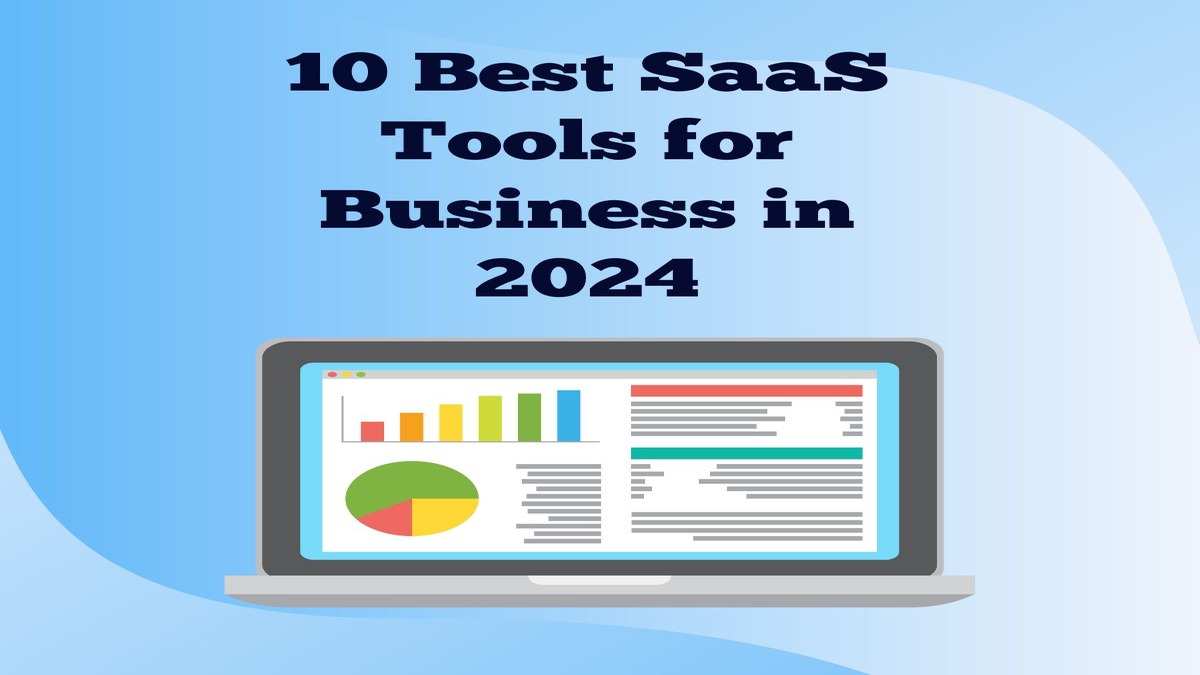What are SaaS Tools?
SaaS (Software as a Service) tools are software applications delivered over the internet as a service. Users can access these tools via a web browser without needing to install or maintain software locally on their devices. SaaS tools are typically subscription-based and hosted by the provider, offering benefits like scalability, automatic updates, and accessibility from any device with an internet connection.
Examples: project management software, CRM systems, and collaboration tools.
Why Should Business use SaaS Tool?
- Cost-Effectiveness: SaaS tools typically operate on a subscription basis, eliminating the need for upfront hardware and software investments. This makes them cost-effective for businesses of all sizes.
- Scalability: SaaS tools are scalable, allowing businesses to easily adjust their usage based on changing needs, such as adding or reducing licenses as the company grows or contracts.
- Accessibility: SaaS tools are accessed via the internet, enabling users to work from anywhere with an internet connection. This flexibility is crucial for remote work and global collaboration.
- Automatic Updates: Providers handle updates and maintenance, ensuring users continuously receive access to the latest features and security enhancements without needing manual intervention.
- Integration: Many SaaS tools offer integrations with other software systems, facilitating seamless data flow and enhancing productivity by centralizing workflows.
- Focus on Core Competencies: By relying on SaaS providers for software management, businesses can allocate more resources to core competencies and strategic initiatives rather than IT maintenance.
- Collaboration and Efficiency: SaaS tools often include collaborative features like real-time editing, file sharing, and communication tools, which improve team collaboration and overall efficiency.
- Security and Compliance: Reputable SaaS providers invest in robust security measures, including data encryption and compliance with industry standards (e.g., GDPR, HIPAA), offering enhanced data protection.
- Trial and Flexibility: Many SaaS tools offer trial periods or flexible subscription plans, allowing businesses to test functionalities and adapt their usage based on performance and evolving needs.
Best SaaS Tools List for Business in 2024
Here we provide some of the best SaaS Tools lists for Business.
1.Teamwork
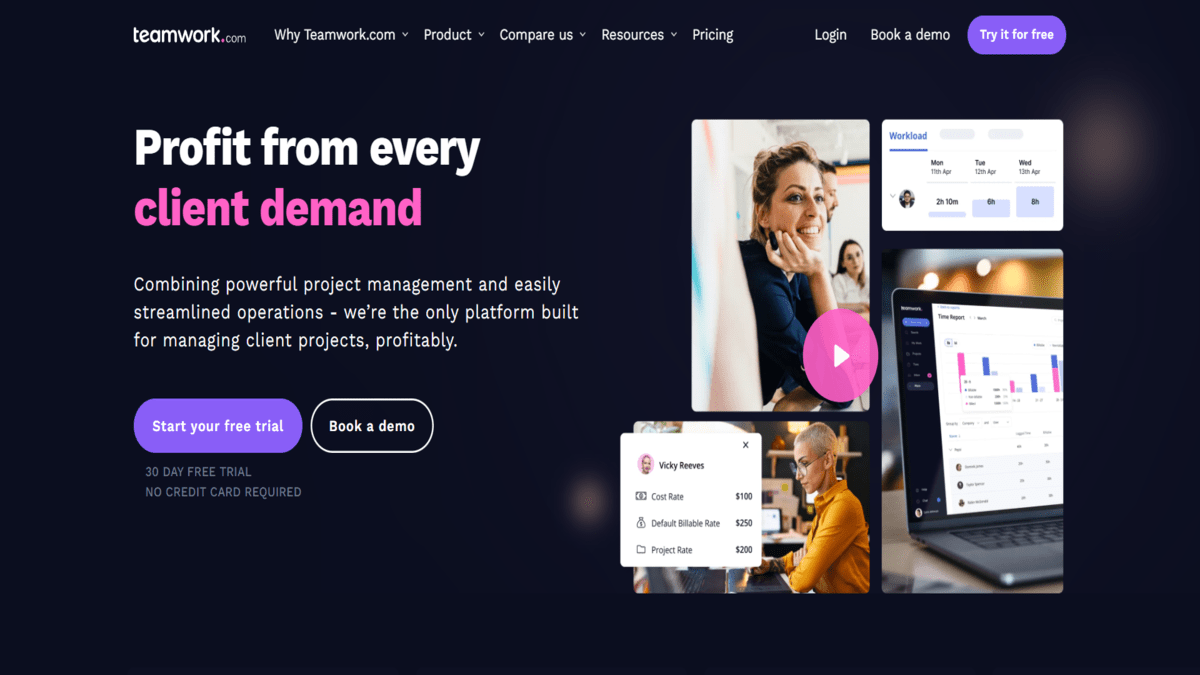
Teamwork is a robust project management tool that helps teams work together more effectively. It offers tools for planning projects, tracking progress, and completing tasks efficiently. Users can create detailed project plans, assign tasks, and monitor deadlines with Gantt charts and task lists. Collaboration is enhanced with features for team messaging, file sharing, and commenting. Additionally, Teamwork provides insights through customizable reports and dashboards to keep everyone informed and projects on track.
Key Features
- Time Tracking: Record time spent on tasks for better productivity analysis and accurate billing.
- Gantt Charts: Visualize project timelines, dependencies, and milestones to ensure projects stay on track.
- File Sharing: Share and store documents, images, and other files securely, ensuring everyone has access to the latest versions.
- Resource Scheduling: Allocate resources effectively to ensure optimal utilization and project success.
- Customizable Reports: Generate detailed reports on project progress, time tracking, and team performance.
- Third-Party Apps: Seamlessly integrate with popular tools like Slack, Google Drive, Microsoft Teams, and more to enhance functionality.
Benefits
- Enhanced Productivity: Effective collaboration boosts efficiency by leveraging strengths and skills.
- Increased Accountability: Teamwork boosts accountability as members depend on each other to meet goals and complete tasks.
- Skill Development: Teamwork fosters learning as members acquire and improve skills through collaboration.
- Adaptability: Teams adapt better to challenges with diverse perspectives and shared goals, enabling flexible strategy adjustments.
- Boosted Morale: Team membership boosts job satisfaction and morale through collaborative support, fostering a positive work environment.
Pricing Details:
Teamwork: See Teamwork Pricing Details
Example
The digital marketing agency uses Teamwork to plan campaigns with Gantt charts, assign tasks, track time, and communicate. They share files easily and create performance reports to show clients campaign progress and results.
2. Basecamp
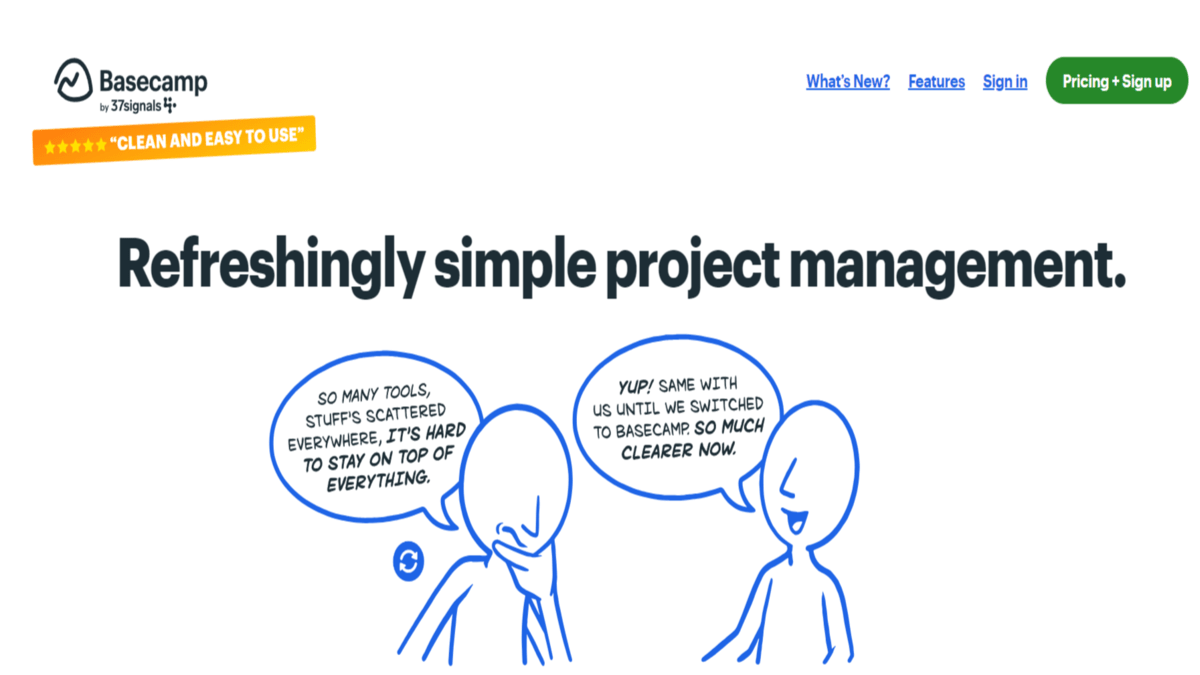
Basecamp is a comprehensive tool for project management and collaboration, designed to streamline team workflows. It integrates to-do lists, file sharing, messaging, scheduling, and document management into a unified platform. Teams can organize tasks efficiently, communicate in real-time, and track project milestones effectively. It’s ideal for enhancing team productivity and ensuring project transparency through centralized information sharing and task management.
Key Features
- To-Do Lists: Organize tasks and track their completion status.
- Message Boards: Facilitate team discussions and updates in threaded conversations.
- Schedules: Manage project timelines and milestones with integrated scheduling tools.
- Document Storage: Store and access project documents in a centralized location.
- Mobile Apps: Access Basecamp on the go with mobile apps for iOS and Android.
Benefits:
- Centralized Communication: Streamlines team communication with message boards and real-time chat, reducing email clutter.
- Improved Collaboration: Enhances collaboration through shared to-do lists, file sharing, and document management.
- Security: Ensures data security with robust encryption and access controls, safeguarding sensitive project information.
- Efficient Project Management: Simplifies project tracking with schedules, milestones, and automated check-ins, ensuring tasks stay on track.
- User-Friendly Interface: Offers an intuitive interface that is easy to navigate and use, minimizing learning curves for new users.
Pricing Details:
Basecamp: See Basecamp Pricing Details
Example
Basecamp enables a marketing agency to coordinate client campaigns, manage tasks, and track project milestones efficiently, streamlining communication and collaboration among team members and clients
3. SmartTask
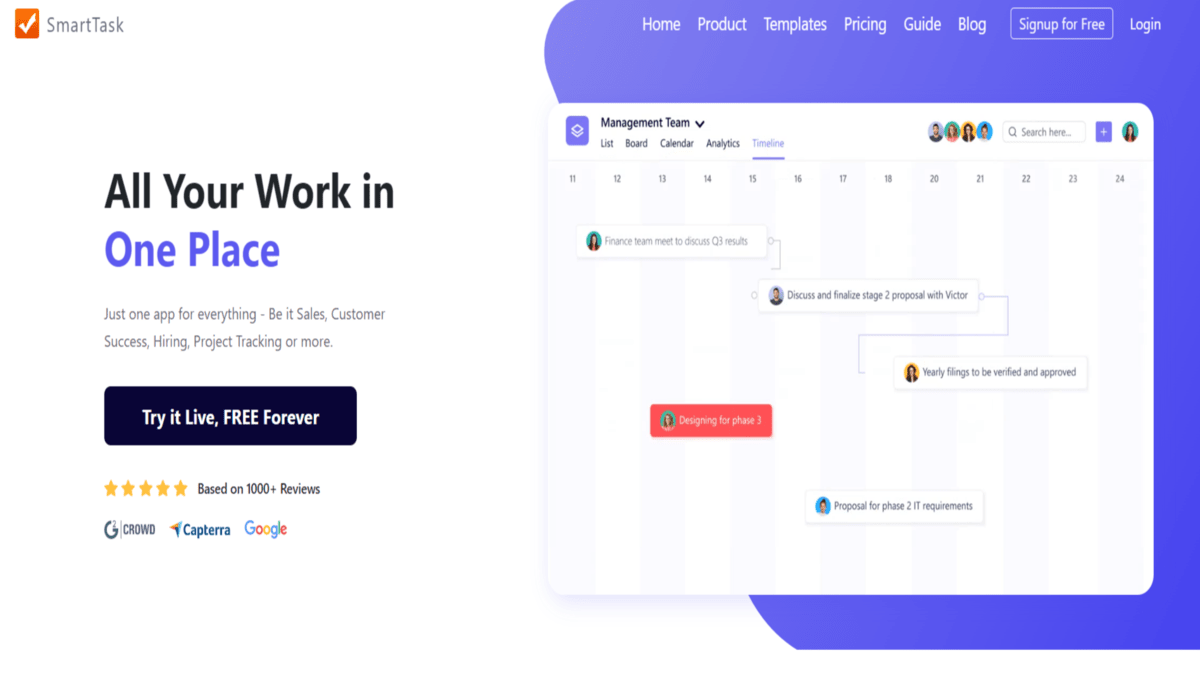
SmartTask is a project management and collaboration tool designed to help teams streamline workflows, manage tasks, and track project progress effectively. It integrates task management, team communication, file sharing, and reporting features in one platform to enhance productivity and project transparency.
Key Features
- Task Management: Organize tasks, assign deadlines, and track progress easily.
- Time Tracking: Monitor time spent on tasks to improve productivity and project planning.
- Project Templates: Use predefined templates to quickly set up new projects and workflows.
- Calendar: Schedule tasks and milestones on a shared calendar for better planning.
- Role-Based Access: Control access levels and permissions to ensure data security and project confidentiality.
Benefits
- Improved Productivity: Streamline task management and collaboration, reducing time spent on coordination.
- Enhanced Communication: Facilitate real-time communication and updates among team members, improving collaboration.
- Centralized Information: Store files, messages, and project details in one platform for easy access and reference.
- Data Security: Ensure data security with role-based access controls and secure cloud storage.
Pricing Details:
SmartTask: See SmartTask Pricing Details
Example
A tech startup uses SmartTask to coordinate software development, manage sprints, and track project timelines efficiently. It helps streamline team collaboration and enhances productivity across distributed teams.
4. Bamboo HR
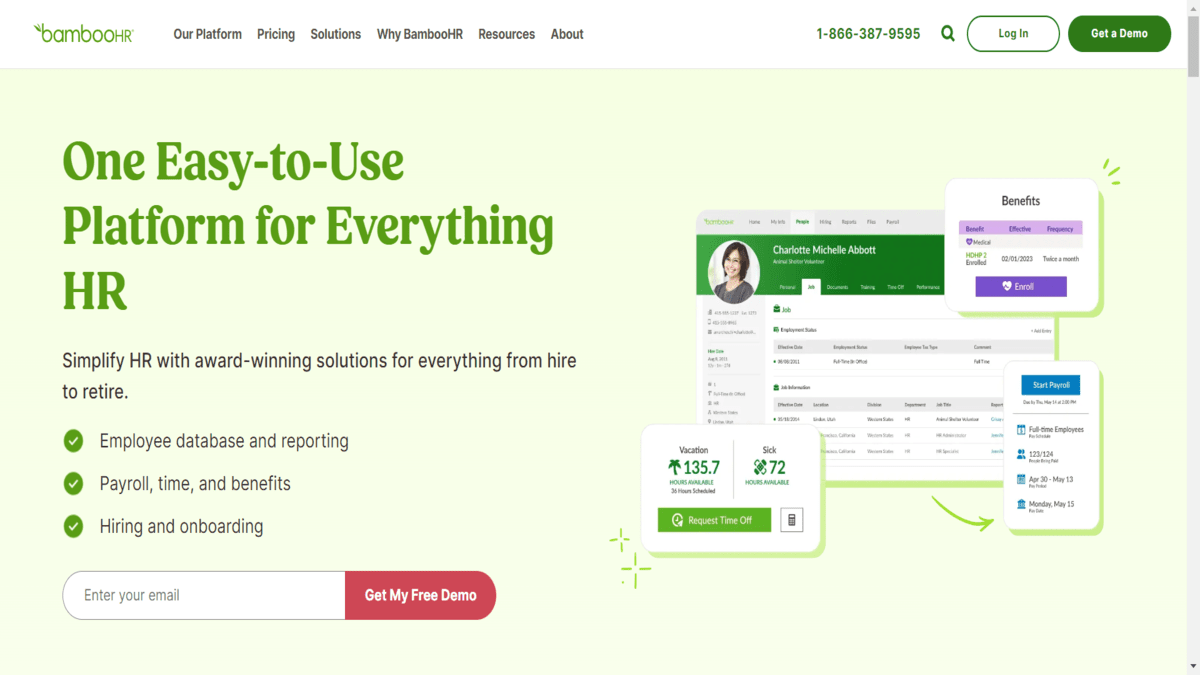
BambooHR is a SaaS (Software as a Service) tool that provides human resources (HR) management solutions for businesses. It helps streamline HR processes such as employee data management, onboarding, time-off tracking, performance management, and more through a cloud-based platform accessible via web browsers and mobile apps.
Key Features
- Employee Database: Centralized storage of employee information, including personal details, job history, and contact information.
- Onboarding: Automated onboarding processes, including document management and task assignments for new hires.
- Time-Off Tracking: Manage and track employee leave, including vacation, sick days, and other types of time off.
- Performance Management: Tools for setting goals, conducting performance reviews, and tracking employee performance over time.
- Mobile Accessibility: Access BambooHR via mobile apps for iOS and Android devices, enabling HR management on the go.
Benefits:
- Streamlined HR Processes: Simplify and automate HR tasks such as onboarding, time-off management, and employee data management.
- Improved Employee Experience: Enhance employee satisfaction with self-service options for accessing information and managing personal details.
- Scalability: Scale HR operations and adapt to organizational growth with flexible and customizable HR solutions.
- Integration Flexibility: Integrate seamlessly with other business systems and applications to streamline workflows and data sharing across the organization.
Pricing Details:
BambooHR: See BambooHR Pricing Details
Example:
A growing tech company uses BambooHR to manage employee onboarding, track time-off requests, and conduct performance reviews efficiently. It helps them streamline HR operations, maintain compliance, and enhance employee satisfaction through easy access to HR resources and self-service options.
5. Trello
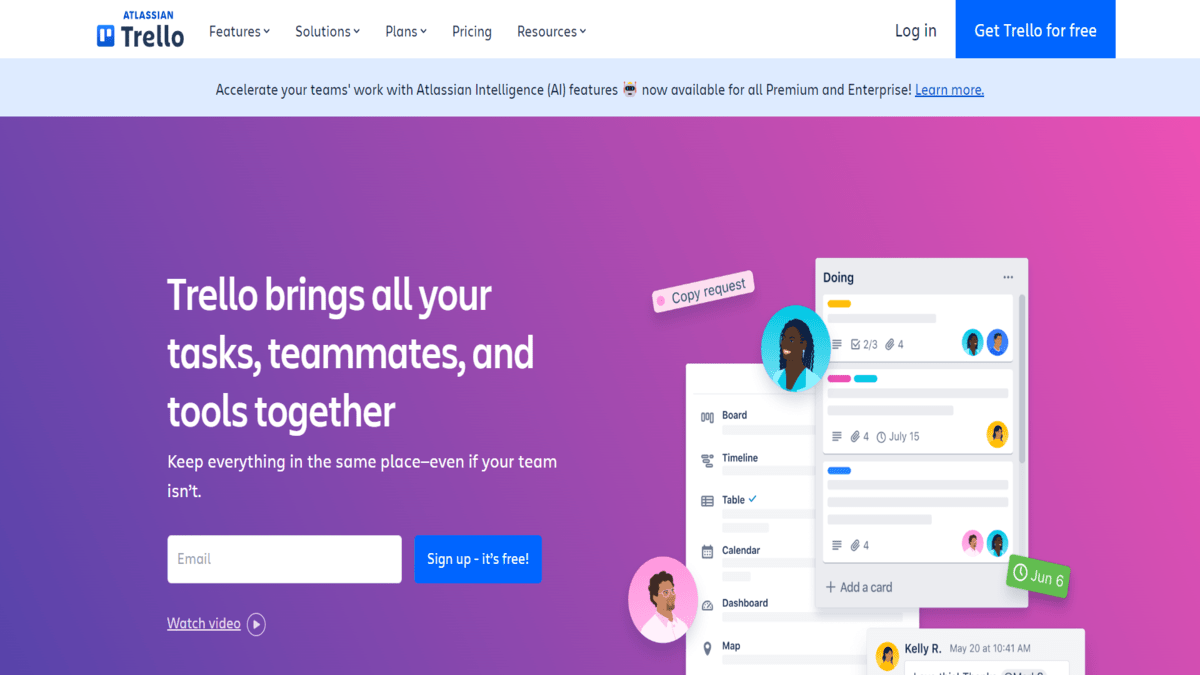
Trello is a web-based project management application that uses boards, lists, and cards to organize tasks and projects. It allows teams to create tasks, assign them to team members, set deadlines, and track progress in a visual and intuitive way. Trello is known for its flexibility and simplicity, making it easy for teams to collaborate and manage workflows effectively.
Key Features
- Kanban Boards: Visualize project workflows with customizable boards.
- Collaboration: Assign tasks, set deadlines, and comment on cards.
- Power-Ups: Enhance functionality with integrations like Slack, Google Drive, and more.
- Mobile Apps: Access Trello on the go with mobile apps for iOS and Android devices, enabling team members to manage tasks and projects from anywhere.
- Checklists and Due Dates: Create checklists within cards to track progress and set due dates to ensure tasks are completed on time.
Benefits:
- Visual Organization: Easily visualize and organize tasks, projects, and workflows with boards, lists, and cards, enhancing clarity and productivity.
- Task Management: Streamline task assignment, tracking, and prioritization with due dates, checklists, labels, and other task management features.
- Workflow Automation: Automate repetitive tasks and processes using Butler automation, improving efficiency and reducing manual effort.
- Transparency: Trello enhances project visibility and accountability by clarifying task status and individual responsibilities.
Pricing Details:
Trello: See Trello Pricing Details
Example
A content creation team uses Trello to manage their editorial calendar, track progress, and ensure timely publication of articles and videos.
6. Asana
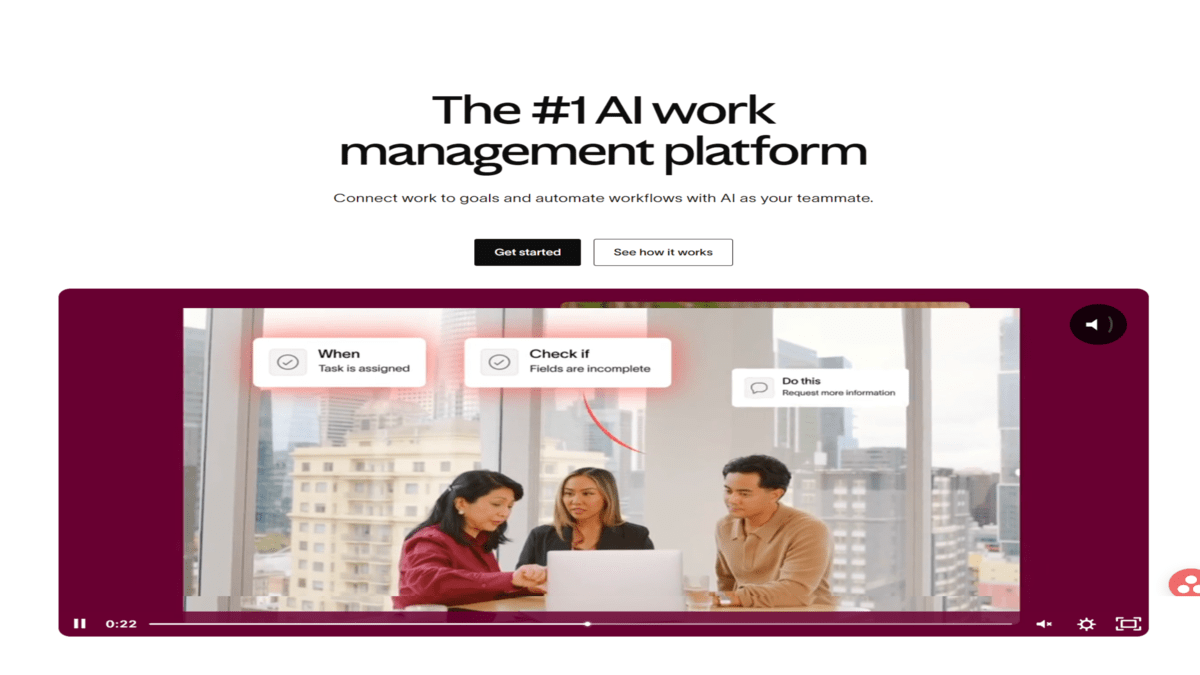
Asana is a web and mobile application designed to help teams organize, track, and manage their work. It allows teams to create projects, assign tasks, set deadlines, and communicate effectively within a collaborative workspace. Asana aims to streamline project management and improve team productivity by providing tools for task management, project tracking, and team coordination.
Key Features
- Task Management: Create tasks, set priorities, and track progress.
- Timeline View: Plan and visualize project timelines with Gantt charts.
- Integrations: Connect with tools like Slack, Dropbox, and Adobe Creative Cloud.
- Calendar View: Visualize tasks and deadlines in a calendar format for better planning and scheduling.
- Collaboration Tools: Facilitate team communication through comments, mentions, and attachments on tasks.
Benefits:
- Enhanced Productivity: Organizes tasks and workflows effectively, reducing time spent on coordination and ensuring clarity on priorities.
- Mobile Accessibility: Asana’s mobile apps enable remote access to tasks and projects, enhancing flexibility and productivity on the go.
- Flexibility and Scalability: Adapts to various project sizes and complexities, scaling with growing team and project needs.
- Real-time Updates and Notifications: Keeps team members informed with real-time updates, notifications, and reminders on task progress and deadlines.
Pricing Details:
Asana: See Asana Pricing Details
Example
A marketing team uses Asana to plan campaigns, assign tasks to team members, track deadlines, and collaborate on content creation and social media strategy. It helps streamline their workflow, ensuring everyone stays aligned and meets campaign milestones efficiently.
7. Zendesk
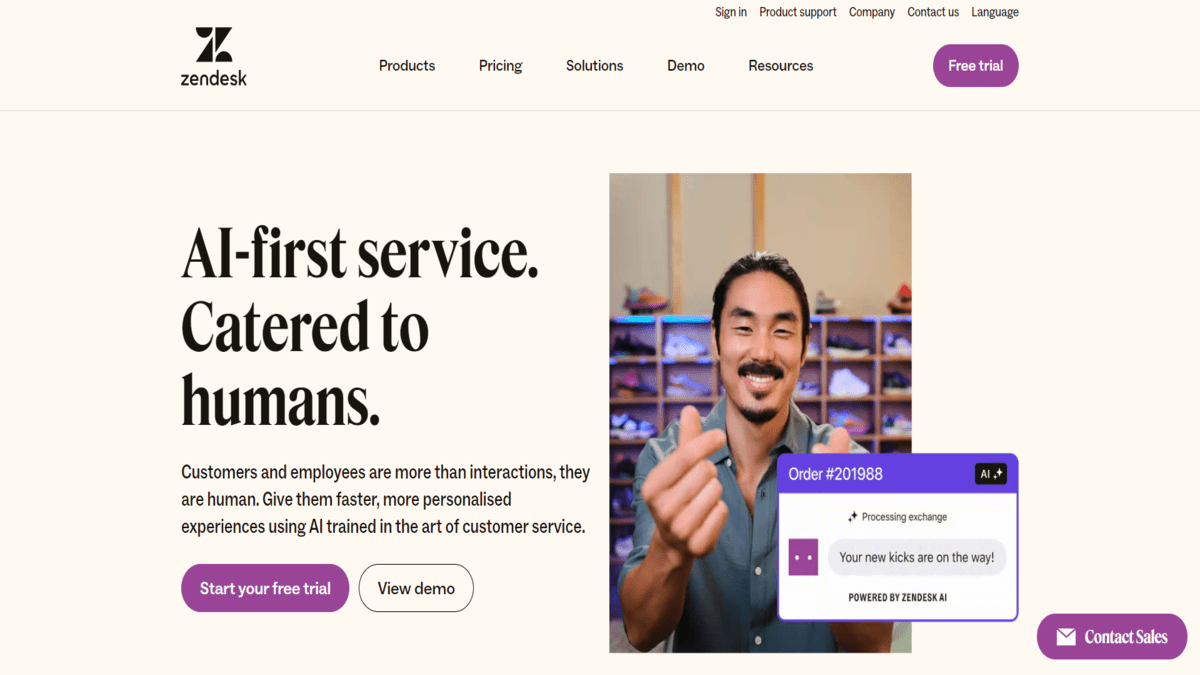
Zendesk is a customer service software company that provides a cloud-based customer support platform. It offers tools for ticketing, customer service management, live chat, knowledge base creation, and customer feedback collection. Zendesk aims to enhance business-customer relationships by facilitating efficient handling of customer inquiries and support requests across multiple channels.
Key Features
- Ticketing System: Manage customer inquiries and issues efficiently.
- Knowledge Base: Provide self-service options with a comprehensive knowledge base.
- Analytics: Gain detailed insights into customer support performance through comprehensive reports.
- Automation: Automate repetitive tasks and workflows to streamline customer support processes and increase efficiency.
- Multichannel Support: Provide support across various channels including email, social media, phone, and chat, ensuring a consistent customer experience.
Benefits:
- Enhanced Productivity: Streamline support workflows and automate routine tasks, freeing support teams to concentrate on addressing more complex issues.
- Reporting and Analytics: Zendesk offers insights for better decisions and improvements based on support team performance, customer feedback, and service trends.
- Scalability: Adapt Zendesk to scale customer support operations with your business growth, meeting evolving needs and increasing customer demands.
- Customer Engagement: Foster stronger relationships with customers through personalized interactions, proactive support, and efficient issue resolution.
- Security and Compliance: Ensure data security and compliance with industry standards through robust security measures and data protection features.
Pricing Details:
Zendesk: See Zendesk Pricing Details
Example
A tech company uses Zendesk to manage customer support tickets, respond to inquiries via live chat, and maintain a knowledge base for self-service. It helps them streamline customer service operations and improve response times across multiple channels.
8. SurveyMonkey
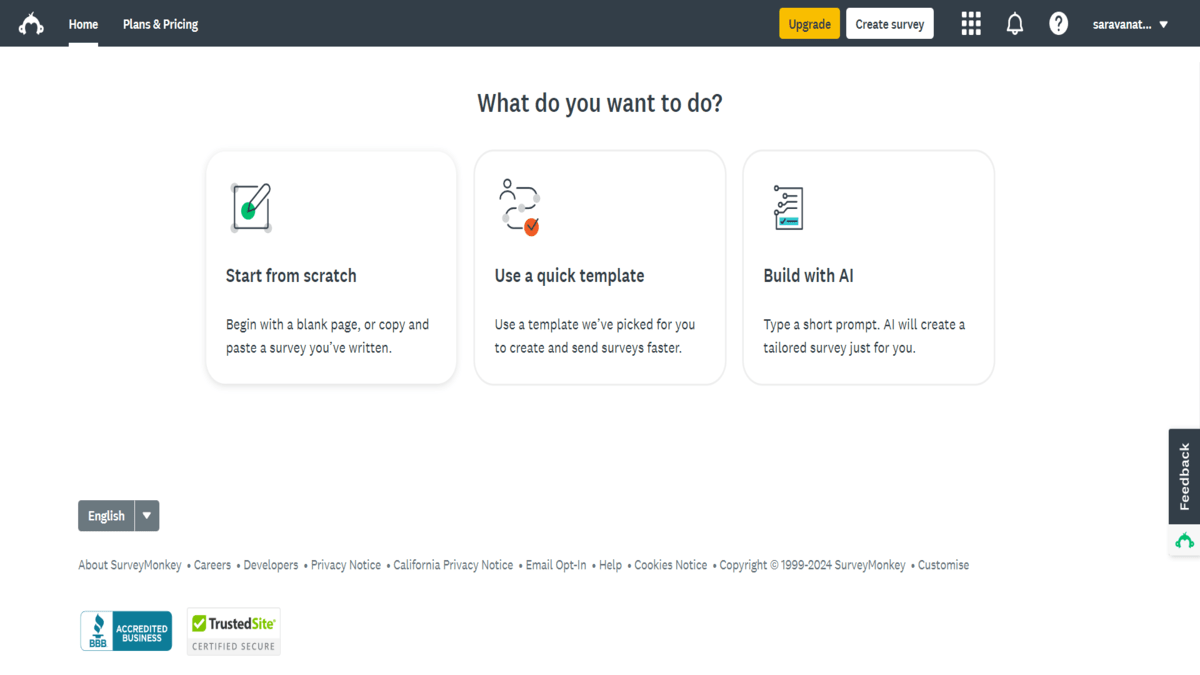
SurveyMonkey is an online survey software tool that allows individuals and businesses to create surveys, collect responses, and analyze results. It offers a user-friendly interface for designing surveys with various question types, distributing them via email, web links, or social media, and generating detailed reports and analytics based on the collected data. SurveyMonkey is widely used for market research, customer feedback, employee satisfaction surveys, and academic research purposes.
Key Features
- Survey Creation: Create surveys with a variety of question types, including multiple choice, rating scales, open-ended questions, and more.
- Survey Templates: Choose from a library of pre-designed survey templates to quickly create surveys tailored to different purposes.
- Distribution Options: Distribute surveys via email invitations, web links, social media, and embedded on websites or apps.
- Response Collection: Collect responses from survey participants in real-time and monitor response rates.
- Data Analysis: Analyze survey results with customizable reports, charts, and graphs to gain insights into trends and patterns.
Benefits
- Ease of Use: User-friendly interface makes it easy to create, distribute, and analyze surveys without needing extensive technical knowledge.
- Flexibility: Customize surveys with different question types, templates, and branding options to fit specific needs and preferences.
- Time Efficiency: Save time with automated features for survey distribution, response collection, and data analysis.
- Accessibility: Access surveys and results anytime, anywhere with mobile apps, facilitating remote work and real-time data collection.
- Integration: Integrate with other tools and platforms to streamline workflows and enhance functionality, such as CRM systems for customer feedback integration.
Pricing Details:
SurveyMonkey: See SurveyMonkey Pricing Details
Example
A marketing team uses SurveyMonkey to gather customer feedback on a recent product launch. They distribute surveys via email and social media to collect responses about product satisfaction, usability, and feature preferences. SurveyMonkey’s analytics help them identify areas for improvement and guide future marketing strategies based on customer insights.
9. Livechat
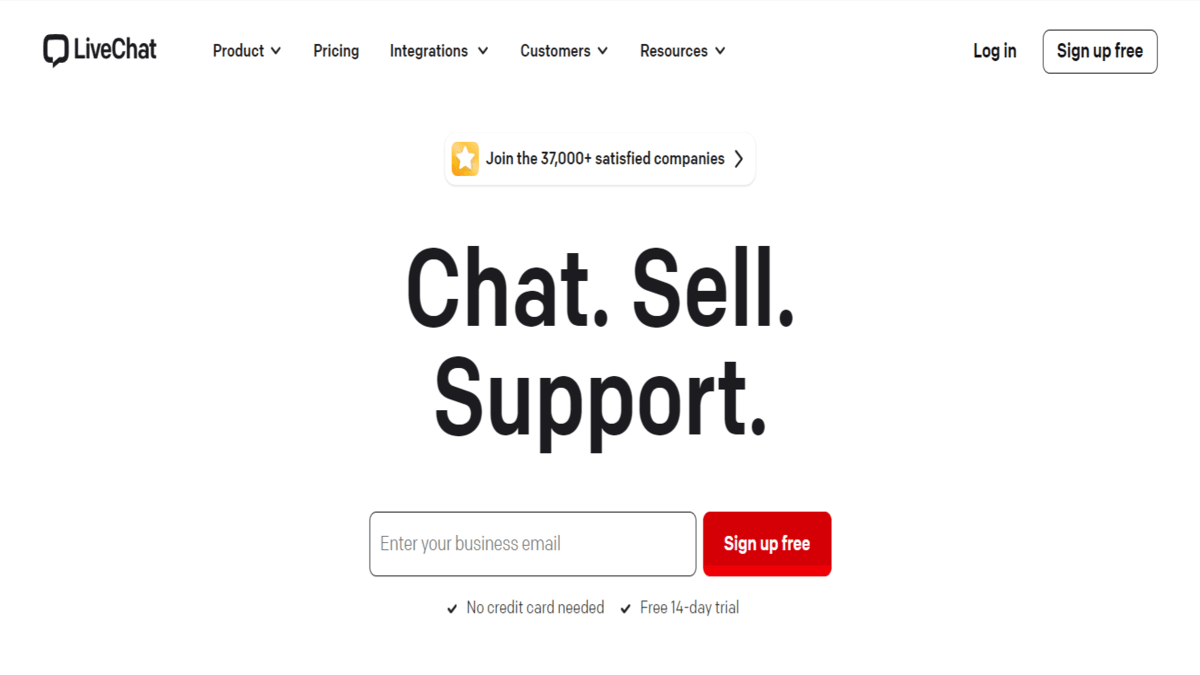
LiveChat is a tool for businesses to offer real-time support on their websites and apps. It lets customers chat instantly with agents for help, questions, or issue resolution. Features include chat logs, file sharing, saved responses, and connections to other customer service tools, aiming to boost satisfaction and sales by providing quick, personalized assistance online.
Key Features
- Real-Time Chat: Engage with customers instantly through live chat for quick support and assistance.
- Chat Transcripts: Save chat histories for reference and follow-up on customer interactions.
- File Sharing: Share documents, images, or screenshots during chat sessions to assist customers effectively.
- Visitor Monitoring: Track visitor behavior and gather insights to improve customer interactions and sales strategies.
- Integration: Integrate with CRM systems, help desk software, and other tools to streamline workflows and data management.
Benefits:
- Improved Customer Service: Provide real-time support, resolving customer queries and issues quickly, which enhances satisfaction.
- Increased Sales: Engage visitors proactively, guiding them through purchasing decisions and potentially boosting conversion rates.
- Insightful Analytics: Gain valuable insights from chat data and customer feedback, helping to refine strategies and improve service quality.
- Customer Satisfaction: Overall, LiveChat helps enhance customer satisfaction by providing convenient, responsive, and effective support experiences.
Pricing Details:
Livechat: See Livechat Pricing Details
Example
A retail website uses LiveChat to help customers with questions about products and to complete orders instantly. This improves customer happiness and increases online sales. They use chat records and data analysis to make their support better and improve how customers shop on their site.
10. CrazyEgg
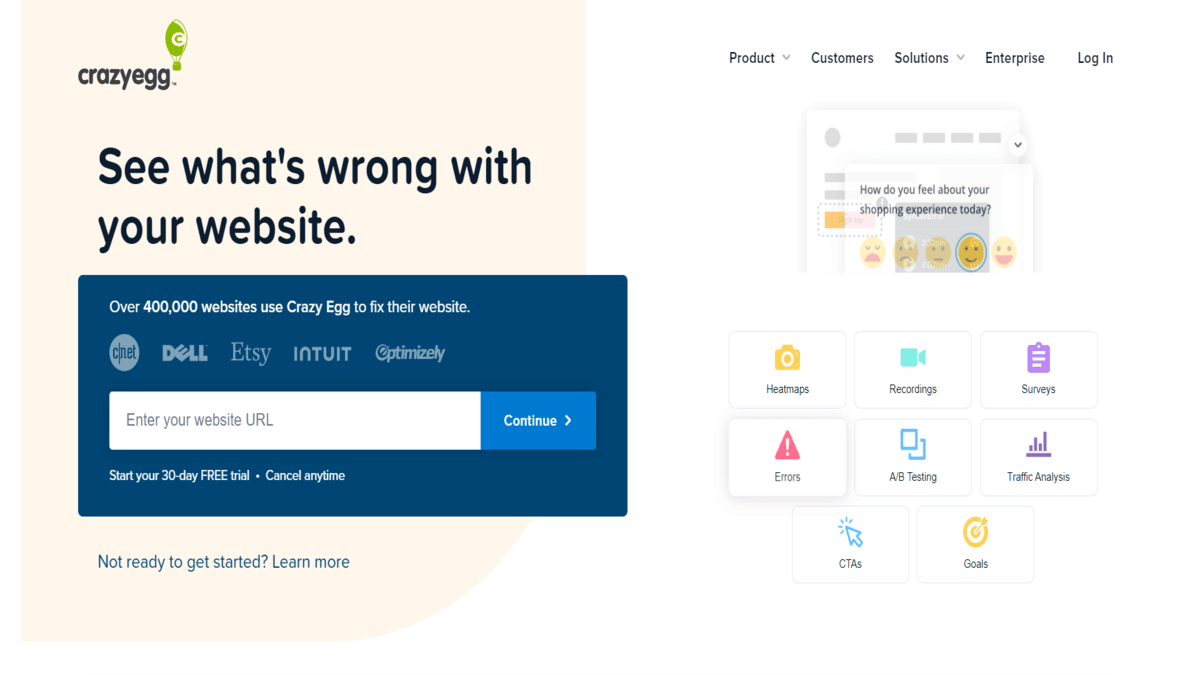
Crazy Egg is a web analytics tool that provides insights into website visitor behavior through heatmaps, scrollmaps, and other visual reports. It helps businesses understand how users interact with their website’s pages, identifying areas for optimization to improve user experience and conversion rates.
Key Features
- Heatmaps: Visualize where users click, move their mouse, and spend time on your website pages to understand user behavior and engagement.
- Scrollmaps: Show how far users scroll down on your web pages, helping to optimize content placement and layout.
- Confetti Reports: Segment clicks by referral sources, search terms, demographics, and more to analyze user interaction based on different criteria.
- Overlay Reports: Display specific click metrics directly on your website, indicating which elements receive the most interaction.
- A/B Testing: Experiment with different versions of your web pages to determine which designs or content variations perform best in achieving your goals.
Benefits:
- Visual Insights: Gain clear, visual data through heatmaps, scrollmaps, and user recordings to understand how visitors interact with your website.
- Optimization Opportunities: Identify areas for improvement based on user behavior, helping to enhance user experience and increase conversion rates.
- Data-Driven Decisions: Make informed decisions about website design, content placement, and navigation improvements using data-backed insights.
- Integration: Seamlessly integrate with other analytics tools and platforms to complement existing data and streamline workflows.
- Mobile Optimization: Tailor your website for mobile users with specific insights and optimizations geared towards mobile devices.
Pricing Details:
CrazyEgg: See CrazyEgg Pricing Details
Example
A retail website uses Crazy Egg to analyze heatmap data, revealing where users click most on their product pages. Based on insights, they customize layout and content to boost user engagement and drive higher sales conversions.
How to choose the correct SaaS Tool for business:

Choosing the right SaaS (Software as a Service) tool for your business in 2024 involves a strategic approach tailored to your specific needs and goals. Here are steps to guide you in making an informed decision:
- Assess Business Needs: Identify operational pain points and automation needs in sales, marketing, customer service, HR, and finance departments.
- Define Key Features: Prioritize critical features over optional ones when listing SaaS tool requirements to effectively meet business needs.
- Research and Compare Options: Research SaaS tools online and use industry insights to create a shortlist based on your needs.
- Evaluate User Experience: Demo or trial SaaS providers to test usability and user experience for team adoption.
- Scalability and Integration: Evaluate scalability and integration capabilities of the SaaS tool for seamless growth and workflow efficiency.
- Security and Compliance: Prioritize data security and compliance with GDPR, HIPAA, and other regulations. Review provider’s security measures, policies, and certifications.
- Cost and ROI: Consider total ownership costs like subscriptions, setup, and training. Calculate ROI based on efficiency gains and revenue growth.
- Customer Support and Service Level Agreements (SLAs): Review the SaaS provider’s customer support for response times, available support channels, and SLAs. Reliable support is crucial for fast issue resolution and minimal downtime.
- Feedback and Reviews: Review user feedback to gauge the SaaS tool’s real-world reliability, performance, customer service quality, and update frequency.
- Future Roadmap and Innovation: Review the provider’s roadmap for updates that align with your future business needs and technological advancements.
Conclusion:
These ten SaaS tools are pivotal for businesses in 2024, offering solutions that enhance productivity, streamline operations, and drive growth. Whether you’re managing customer relationships, coordinating team projects, or handling finances, these tools provide the capabilities needed to succeed in today’s competitive business environment.
FAQs
1. What are SaaS tools?
Ans. SaaS (Software as a Service) tools are software applications hosted and maintained by a service provider and accessed over the internet. They offer subscription-based access to various functionalities without the need for local installation.
2. Why should businesses use SaaS tools?
Ans. SaaS tools provide flexibility, scalability, and cost-effectiveness compared to traditional software. They enable businesses to access advanced functionalities, improve collaboration, and streamline operations without heavy upfront costs.
3. What factors should businesses consider when choosing SaaS tools?
Ans. Businesses should consider factors like functionality fit, scalability, integration capabilities, data security, customer support, and total cost of ownership when choosing SaaS tools.
4. What are some popular categories of SaaS tools for businesses in 2024?
Ans. Popular categories include project management, CRM (Customer Relationship Management), HR (Human Resources) management, collaboration tools, marketing automation, and cybersecurity tools.
5. How can businesses ensure data security with SaaS tools?
Ans. Businesses should prioritize SaaS providers that adhere to industry standards like GDPR, HIPAA, and have robust security measures such as data encryption, access controls, regular audits, and compliance certifications.
6. What are the advantages of using SaaS tools over traditional software?
Ans. Advantages include easier scalability, automatic updates, accessibility from anywhere with internet, reduced IT overhead, and often lower initial costs due to subscription-based pricing.
7. How can businesses ensure ROI from investing in SaaS tools?
Ans. Businesses should calculate ROI based on efficiency gains, cost savings, improved productivity, and revenue growth facilitated by the SaaS tools. They should also monitor usage and seek user feedback for continuous improvement.
8. What are some challenges businesses might face when adopting SaaS tools?
Ans. Challenges include data migration issues, integration complexities with existing systems, dependency on internet connectivity, potential vendor lock-in, and ensuring compliance with data protection regulations.
9. How should businesses train employees to effectively use new SaaS tools?
Ans. Businesses should provide comprehensive training sessions, access to user guides and tutorials, and encourage hands-on practice to ensure employees are proficient in using the SaaS tools effectively.
10. What should businesses do if they encounter issues with a SaaS tool?
Ans. Businesses should first contact the provider’s customer support for assistance. They should also check FAQs, community forums, and consider upgrading support plans if needed for faster issue resolution.
Read More: Top 10 Best Business Intelligence Trends for 2024

